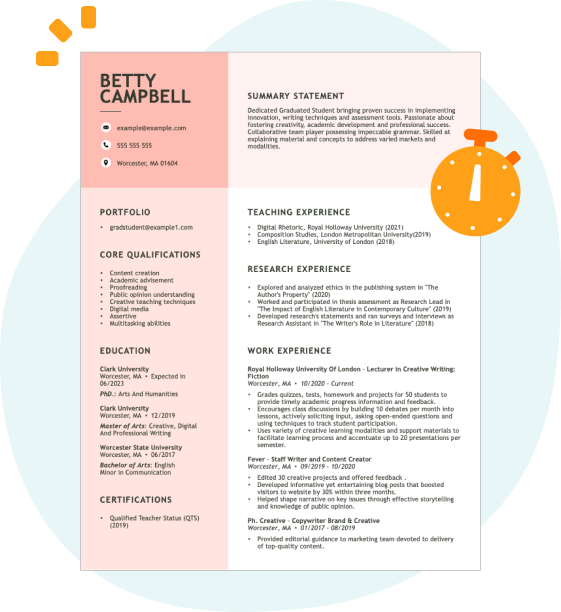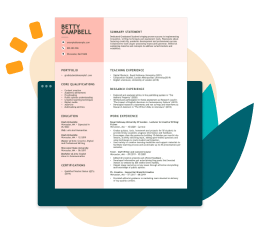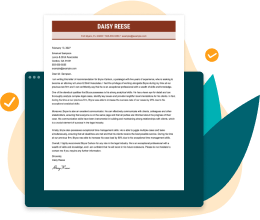Technical abilities, such as skill in installing, maintaining, and troubleshooting various systems and equipment, are examples of hard skills.
Popular Installer Resume Examples
Check out our top installer resume examples that demonstrate key skills like precision, problem-solving, and technical knowledge in the field. These examples provide a great foundation for showcasing your relevant experience effectively.
Ready to build your standout resume? Our Resume Builder offers user-friendly templates designed specifically for installers, helping you make a strong impression on potential employers.
Entry-level installer resume
This entry-level resume effectively highlights the applicant's extensive hands-on experience in appliance installation and showcases their commitment to customer satisfaction. New professionals must convey their technical skills and problem-solving abilities through measurable achievements, even when they have limited work history.
Mid-career installer resume
This resume effectively showcases the job seeker's qualifications by highlighting their extensive experience in installation and technical support. The clear presentation of accomplishments and leadership roles indicates readiness for advanced responsibilities, reflecting a strong career trajectory in the installation field.
Experienced installer resume
The work history section illustrates the applicant's extensive experience as an installer, demonstrating their success in optimizing processes and improving system reliability. Key achievements include a 30% reduction in equipment downtime and annual savings of $25,000, with clear formatting aiding readability for hiring managers.
Resume Template—Easy to Copy & Paste
John Zhang
Parkview, MO 64158
(555)555-5555
John.Zhang@example.com
Professional Summary
Highly skilled Installer with 4 years of experience in residential and commercial installations. Proven expertise in improving installation efficiency and client satisfaction with a focus on diagnostic testing and team training.
Work History
Installer
Precision Home Solutions - Parkview, MO
January 2023 - October 2025
- Installed over 200 residential HVAC systems
- Improved installation efficiency by 30%
- Managed client consultations with 95% satisfaction
Field Technician
Elite Tech Innovations - St. Louis, MO
January 2021 - December 2022
- Conducted 500+ equipment diagnostic checks
- Reduced service time by 20% with new protocols
- Trained 15 junior technicians on safety standards
Installation Assistant
Homesafe Security Solutions - St. Louis, MO
January 2019 - December 2020
- Assisted in installing over 100 security systems
- Achieved 100% project completion by deadlines
- Coordinated with teams to resolve 50+ site issues
Skills
- Residential and commercial installations
- HVAC system expertise
- Diagnostic testing proficiency
- Efficiency improvement
- Client satisfaction focus
- Team training capability
- Safety protocols knowledge
- Project management skills
Education
Master of Science Engineering
University of Illinois Urbana-Champaign, Illinois
May 2018
Bachelor of Science Industrial Technology
Illinois State University Normal, Illinois
May 2016
Certifications
- Certified HVAC Technician - National Association of Home Builders
- Installation and Maintenance Specialist - International Code Council
Languages
- Spanish - Intermediate (B1)
- French - Beginner (A1)
- German - Beginner (A1)
How to Write an Installer Resume Summary
Your resume summary is the first impression you make on hiring managers, so it’s important to craft it carefully. As an installer, you should emphasize your technical skills and hands-on experience to stand out in this competitive field. To guide you in creating a powerful summary, here are some examples that highlight effective strategies and common pitfalls:
Weak resume summary
I am an experienced installer with a long history in the field and a range of skills. I hope to find a job that allows me to use my talents and provides advancement opportunities. A supportive work environment is very important to me, as well as being able to learn new things. I believe I can make a positive impact on any team.
- Lacks specific details about the applicant's skills or experiences, making it vague
- Focuses more on personal desires rather than showcasing what the job seeker brings to potential employers
- Uses generic phrases that do not highlight unique qualifications or achievements
Strong resume summary
Proficient installer with over 7 years of experience in residential and commercial environments, specializing in HVAC systems and energy-efficient installations. Achieved a 20% increase in customer satisfaction ratings by implementing rigorous quality control measures and thorough client consultations. Competent in using advanced installation technologies, troubleshooting complex systems, and maintaining compliance with industry standards.
- Begins with clear experience level and specialization area relevant to the role
- Highlights a quantifiable achievement that illustrates direct impact on customer satisfaction
- Showcases specific technical skills that align with job requirements in the installation industry
PRO TIP
Showcasing Your Work Experience
The work experience section is important for your installer resume because it holds the majority of your content. Resume templates consistently emphasize this area to effectively showcase your skills and background.
This section should list your previous jobs in reverse-chronological order. Use bullet points to highlight specific achievements and tasks that demonstrate your expertise as an installer.
Now, let's look at a couple of examples that illustrate effective work history entries for installers. These examples will help you understand what stands out and what doesn’t:
Installer
ABC Home Services – Dallas, TX
- Installed various home appliances.
- Followed basic safety procedures.
- Worked with a team on installation projects.
- Conducted minor repairs as needed.
- Lacks specific employment dates to show duration of experience
- Bullet points do not highlight unique skills or contributions
- Describes routine tasks instead of measurable achievements
Installer
ABC Home Solutions – Orlando, FL
March 2020 - Present
- Successfully installed over 300 residential solar panel systems, improving energy efficiency for homeowners.
- Reduced installation time by 20% through the implementation of streamlined processes and effective teamwork.
- Trained and mentored new installers, improving team performance and ensuring adherence to safety standards.
- Starts each bullet with a powerful action verb that showcases the applicant's contributions
- Incorporates specific metrics to highlight achievements and impact on company operations
- Demonstrates relevant skills in training and process improvement that are important for the role
While your resume summary and work experience are critical, don't overlook the importance of other sections. Each part plays a key role in showcasing your skills and qualifications effectively. For a deeper dive into crafting a standout resume, check out our comprehensive guide on how to write a resume.
Top Skills to Include on Your Resume
A strong resume should always include a technical skills section, as it allows you to quickly demonstrate your qualifications to potential employers. This section is essential for showcasing the specific abilities that make you an ideal applicant for the installer position.
For installers, it's important to highlight technical skills such as skill with tools, systems, and software relevant to the job. Examples might include experience with power tools, familiarity with installation protocols, and knowledge of safety regulations in the industry.
These skills ensure that systems operate efficiently and safely. In contrast, soft skills include effective communication, problem-solving, and teamwork. These are essential for collaborating with colleagues and understanding client needs to deliver quality service.
Selecting the right resume skills for your resume is important to align with what employers expect from their ideal applicants. Many companies use automated screening systems that filter out applicants lacking essential skills, making it important to showcase your relevant qualifications earlier in the process.
To effectively highlight your skills, carefully review job postings in your field. This will help you identify which resume skills are sought after by recruiters and ensure that your resume stands out during ATS scans and captures employer interest.
PRO TIP
10 skills that appear on successful installer resumes
Highlighting essential skills on your resume can significantly increase your chances of attracting recruiters' attention for installer positions. Our resume examples showcase how to effectively present these in-demand skills, helping you step into your next opportunity with confidence.
By the way, if you want to improve your application, consider including relevant skills from the following list that align with your experience and job requirements:
Attention to detail
Problem-solving
Technical skill
Time management
Customer service orientation
Blueprint reading
Tool handling expertise
Safety compliance knowledge
Installation techniques mastery
Team collaboration
Based on analysis of 5,000+ computer software professional resumes from 2023-2024
Resume Format Examples
Selecting the right resume format is important for showcasing your technical skills, experience, and career growth as an installer.
Functional
Focuses on skills rather than previous jobs
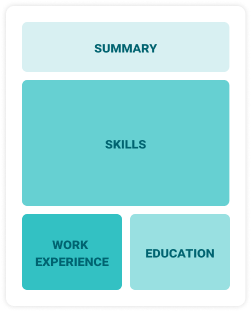
Best for:
Recent graduates and career changers with up to two years of experience
Combination
Balances skills and work history equally
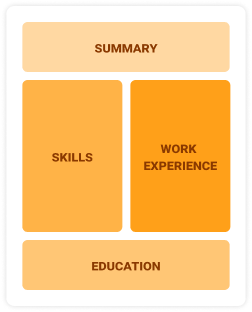
Best for:
Mid-career professionals looking to highlight their skills and growth potential
Chronological
Emphasizes work history in reverse order
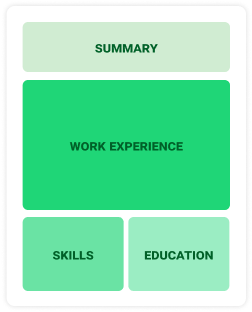
Best for:
Seasoned installers excelling in project management and advanced techniques
Installer Salaries in the Highest-Paid States
Our installer salary data is based on figures from the U.S. Bureau of Labor Statistics (BLS), the authoritative source for employment trends and wage information nationwide.
Whether you're entering the workforce or considering a move to a new city or state, this data can help you gauge what fair compensation looks like for installers in your desired area.
Frequently Asked Questions
Should I include a cover letter with my installer resume?
Absolutely, including a cover letter can significantly improve your application by showcasing your personality and specific qualifications for the role. It gives you a chance to elaborate on your experience and demonstrate genuine interest in the position. For assistance, consider using our Cover Letter Generator or check out our comprehensive guide on how to write a cover letter.
Can I use a resume if I’m applying internationally, or do I need a CV?
When applying for jobs outside the U.S., use a CV instead of a resume. A CV offers a comprehensive view of your academic and professional history, which is often preferred internationally. Check out our guides on how to write a CV for formatting tips and explore these CV examples to help you craft an effective CV.
What soft skills are important for installers?
Soft skills like communication, problem-solving, and teamwork are essential for installers. These interpersonal skills facilitate effective collaboration with clients and coworkers, ensuring projects run smoothly and fostering trust in relationships, which ultimately leads to successful installations and satisfied customers.
I’m transitioning from another field. How should I highlight my experience?
Highlight your transferable skills such as communication, teamwork, and adaptability when applying for installer positions. These abilities illustrate your potential to excel in the job, even if your previous roles are outside the field. Use specific examples from past jobs to show how you can tackle installation challenges effectively and contribute positively to the team.
Where can I find inspiration for writing my cover letter as an installer?
For those pursuing installer positions, using cover letter examples can be incredibly beneficial. These samples offer valuable insights into formatting and content ideas, helping you showcase your skills and qualifications effectively to potential employers. You can draw inspiration from these examples to improve your application materials.
Should I use a cover letter template?
Yes, using a cover letter template tailored for installers can significantly improve your application. It provides a clear structure and helps you highlight relevant skills such as technical skill, problem-solving abilities, and past project successes that appeal to hiring managers.


